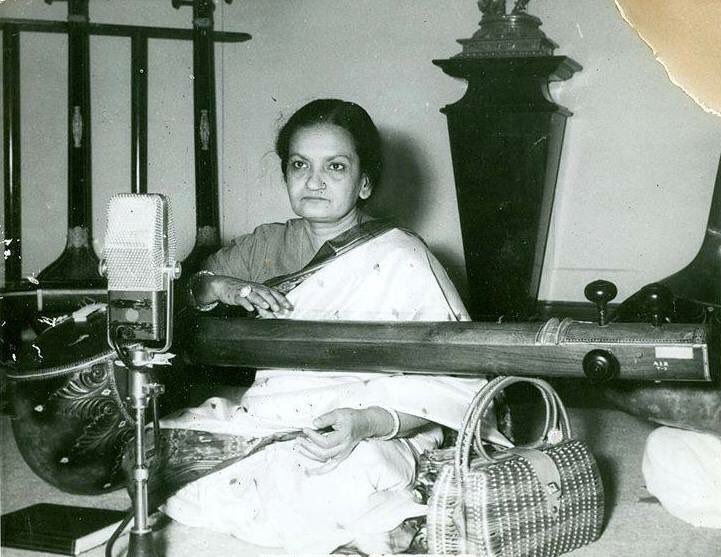BILKULONLINE
By Rafat Quadri
Begum Akhtar, also known as Akhtari Bai Faizabadi, was one of India’s most celebrated classical vocalists, revered as the Mallika-e-Ghazal (Queen of Ghazals). Her voice, hauntingly beautiful and expressive, wove ghazals, dadras, and thumris into tapestries of emotion that continue to captivate listeners worldwide. Born on October 7, 1914, in Faizabad, Uttar Pradesh, her journey to musical immortality was both arduous and inspiring, shaped by a profound commitment to her art and the struggles she endured along the way.
Early Life and Challenges
Begum Akhtar’s life was marked by challenges and societal barriers from a young age. Raised in a family with little support for her artistic ambitions, she found a mentor in classical musician Ustad Imdad Khan, who introduced her to the rich heritage of Indian classical music. Despite her early passion and talent, Begum Akhtar faced immense societal scrutiny. Women who pursued singing professionally were stigmatized, especially if they performed ghazals, which were often associated with courtesan traditions. But Begum Akhtar, resilient and fearless, broke these norms, embracing her love for music and standing as a beacon for countless aspiring female musicians.
The Artistry of Begum Akhtar
What sets Begum Akhtar apart is her ability to meld classical rigor with the heart-wrenching pathos of her chosen genres. Her renditions of ghazals transformed the form from mere lyrical expression to spiritual experience, while her thumris and dadras brought an element of transcendence, deeply moving listeners across boundaries of class and geography. Trained in classical music, Begum Akhtar retained the purity of raag while delivering ghazals and semi-classical compositions with unmatched emotional depth. Her mehfil performances became legendary, as her evocative voice could move an entire audience to tears.
Begum Akhtar’s vocal style was heavily influenced by mehfil culture, where performers sang to intimate gatherings. Her mastery over the emotive power of pauses, the subtle inflections, and the modulation of voice made her performances intense and intimate, as if she were singing directly to each listener. Ghazals like “Ae Mohabbat Tere Anjaam Pe Rona Aaya” and “Deewana Banana Hai” remain timeless classics. With each rendition, she delved into the myriad facets of love, longing, and separation, connecting her personal struggles with those of her audience.
Breaking Barriers and Setting Standards
In an era when music was largely male-dominated, Begum Akhtar became an icon for women in the arts, a powerful symbol of perseverance and talent. Her entry into Bollywood in the 1930s with films like Roti and Jalsa briefly showcased her acting talent, but her true love was music. She returned to singing full-time, distancing herself from commercial cinema to focus on what she loved most. Her dedication paid off: her voice became synonymous with Indian classical and semi-classical music, and her recordings, first made by HMV, became precious keepsakes for her fans.
Her career continued to flourish despite personal struggles and deteriorating health. In a field that was often unforgiving, her undeterred dedication to her craft earned her prestigious awards, including the Sangeet Natak Akademi Award and Padma Bhushan, one of India’s highest civilian honors. These accolades were fitting for a woman who redefined the ghazal genre, preserving its classical essence while expanding its reach to the broader public.
Legacy of Begum Akhtar
Begum Akhtar passed away on October 30, 1974, while performing on stage, embodying her lifelong commitment to music until her last breath. Her legacy endures through the countless musicians inspired by her trailblazing career, her mastery of ghazal, dadra, and thumri, and her unwavering spirit.
Today, Begum Akhtar is more than just a name in Indian music; she is a symbol of passion and resilience. She represents the voice of tradition, the resilience of spirit, and the beauty of artistic integrity. Through her recordings, listeners can still feel the depth of her emotions, as if she’s speaking to each one directly, bridging the chasm of time and cultural change.
For those who seek to be inspired by her story, Begum Akhtar stands as a reminder that true artistry knows no bounds. It transcends age, gender, and societal expectation, weaving the essence of the human soul into melodies that will echo for generations.
(Rafat Quadri can be contacted at editorbilkul@gmail.com)
